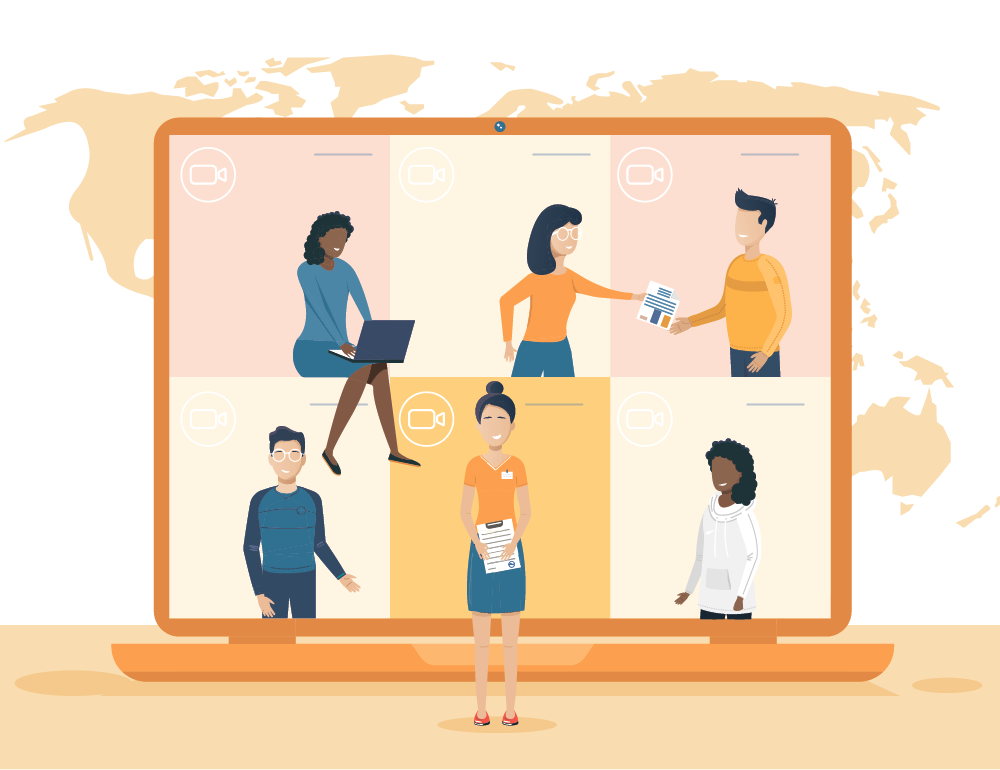Have you ever felt like you didn't really feel "included" in a workshop you attended?

Perhaps you felt uneasy speaking up with so many people in the room (including very senior people).
Perhaps the pace was so quick, the materials so dense and the tools so complex that you couldn't keep up.
Perhaps you shared an interesting point or asked a question, but nobody seemed to hear it...so you disengaged.
Even as an avid facilitator (nearly 15 years now!), I sometimes clam up as a participant. Too often the way workshops are set up makes it hard for everyone to engage, especially folks from marginalized identity groups (i.e. people who are Black and Brown, neurodivergent, LGBTQIA+, non-native English speakers, disabled, and so forth).
If you are an educator, facilitator, trainer, learning experience designer — or a subject matter expert creating your own learning experiences — read on to discover practical tips that help you ensure your participants feel heard, included and valued.
3 tips to design more inclusive learning experiences
1) Critically examine our defaults (and who they center)
Our upbringing, identity, experiences, background, and place in society inform how we behave and how we perceive the world. Cognitive biases and inherited beliefs from oppressive systems will, consciously and unconsciously, shape how we design our learning experiences and who we center.
Principle. Our “normal” often mirrors not only the groups we’re most familiar with but those that are centered in society under oppressive systems (ie.., those who are white, male, non-disabled, wealthy, cisgender, etc.)
Ask yourself. Who might this activity unintentionally pressure or expose? What identities or insecurities could be put under a microscope here?
Try this. If an icebreaker risks identity-based discomfort (e.g., drawing each other's faces in ways that may surface stereotypes and bias), swap it for a neutral prompt that doesn’t focus on people's bodies or their personal histories: “What’s one thing you’re curious to learn today?” Pair this with an explicit opt-out: “Share as much or as little as you like.”
2) Co-create with participants, not only sponsors
Often, sponsors arrive with a list of skills and tools participants “should” learn. Surveys can surface issues, but they rarely reveal the friction points in the room.
Principle. Design with participants — especially those who face marginalization — so you’re not guessing at needs.
Ask yourself. Who may have the most friction in their experiences in this workshop as currently designed (language, pace, tools, norms)? How can I engage them as I'm building my workshop to understand their needs and to have them shape the experience with me?
Try this. Run a small, compensated participant advisory session as you're defining the key building blocks of the workshop experience. Bring in at least a few perspectives that often get sidelined (e.g., a non-native English speaker, a participant with ADHD managing working memory and distractions). Prototype your agenda, timing, and key activities with them and make one concrete change they suggest to language, pacing, or facilitation style.
3) Name power and design around it
Experienced facilitators can sense hierarchy and personality dynamics. But power dynamics don't only show up in workshops through job titles and temperaments. They show up by way of oppressive and discriminatory norms, which are encoded in all aspects of society.
Principle. Oppressive norms tied to systems of racism, sexism, ableism, homophobia, etc.) show up in workshop habits and tools — not only in how people treat each other but in how the session is structured.
Ask yourself. Where might power asymmetries show up in this agenda? Who gets space to speak freekly, authority to make decisions, and comfort to show up as they are by default?
Try this.
- Airtime & roles. Use round-robin methods to rotate roles (facilitator/timekeeper/notetaker/reporter) so that women and people of color aren’t defaulted into admin work (such as notetaking).
- Language & pace. Use plain language and give a few minutes for quiet thinking rather than demanding immediate responses.
- Access & consent. Choose tools that offer integrated closed captions and live transcripts (and don't forget to turn them on!) navigation) and build explicit opt-outs for cameras, pronouns, and personal disclosures.
What's next from here
Sometimes, we get stuck in patterns in our workshops. Greater inclusivity requires practice and experimentation.
To all the trainers and facilitators out there, I leave you with the one question: What does an inclusive workshop look and feel like for your participants? If you don't know the answer, start there. Open up a dialogue that goes beyond a simple survey to build empathy and co-create the experience before you design and deliver it.







